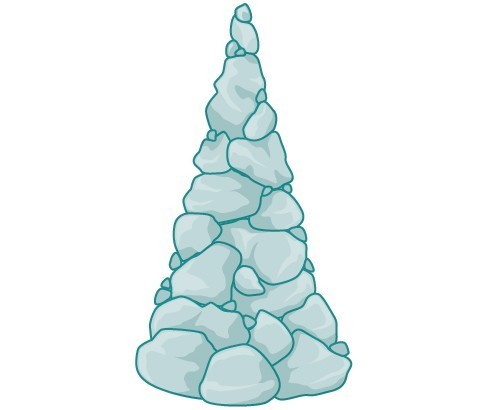Introduction to Inverses and Radical Functions
LEARNING OBJECTIVES
By the end of this lesson, you will be able to:- Find the inverse of a polynomial function.
- Restrict the domain to find the inverse of a polynomial function.
 Figure 1
Figure 1A mound of gravel is in the shape of a cone with the height equal to twice the radius.
The volume is found using a formula from elementary geometry.
[latex]\begin{cases}V=\frac{1}{3}\pi {r}^{2}h\hfill \\ \text{ }=\frac{1}{3}\pi {r}^{2}\left(2r\right)\hfill \\ \text{ }=\frac{2}{3}\pi {r}^{3}\hfill \end{cases}\\[/latex]
We have written the volume V in terms of the radius r. However, in some cases, we may start out with the volume and want to find the radius. For example: A customer purchases 100 cubic feet of gravel to construct a cone shape mound with a height twice the radius. What are the radius and height of the new cone? To answer this question, we use the formula
[latex]r=\sqrt[3]{\frac{3V}{2\pi }\\}[/latex]
This function is the inverse of the formula for V in terms of r.
In this section, we will explore the inverses of polynomial and rational functions and in particular the radical functions we encounter in the process.
Licenses & Attributions
CC licensed content, Shared previously
- Precalculus. Provided by: OpenStax Authored by: Jay Abramson, et al.. Located at: https://openstax.org/books/precalculus/pages/1-introduction-to-functions. License: CC BY: Attribution. License terms: Download For Free at : http://cnx.org/contents/[email protected]..
